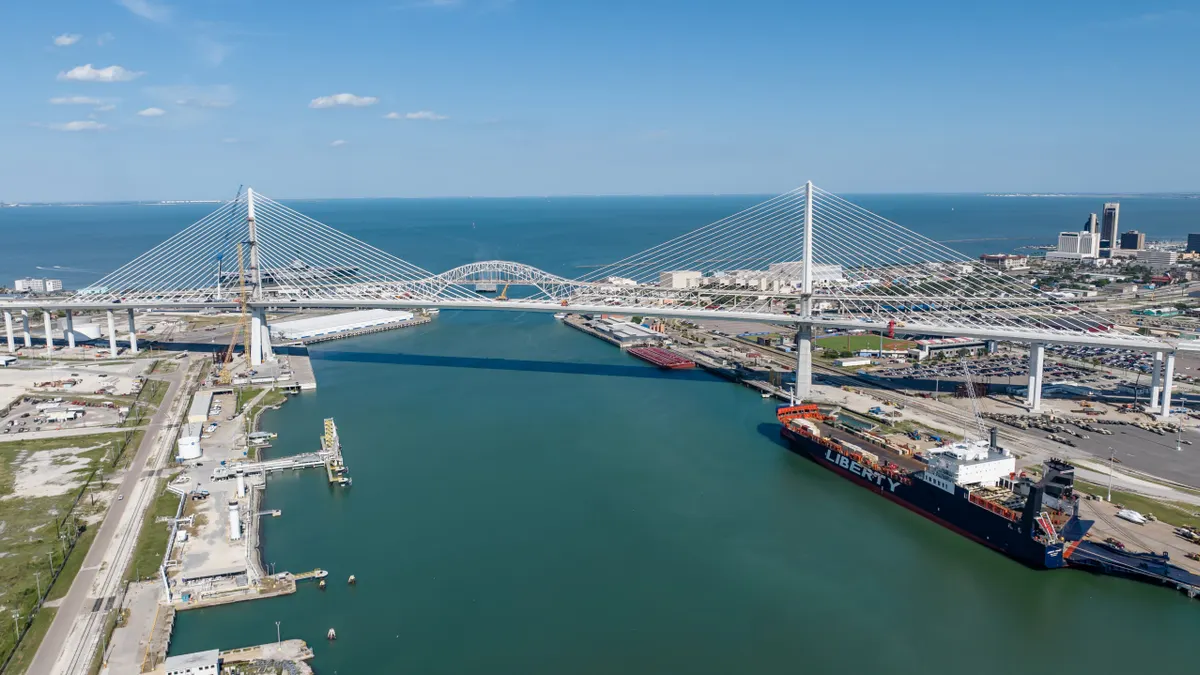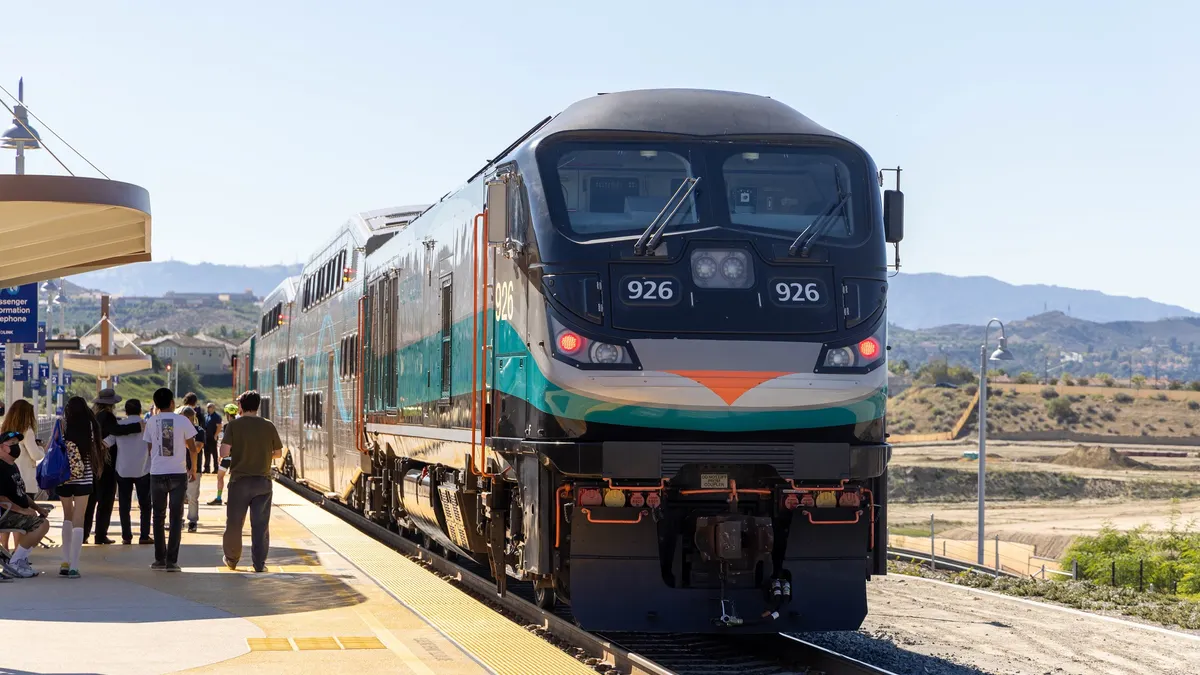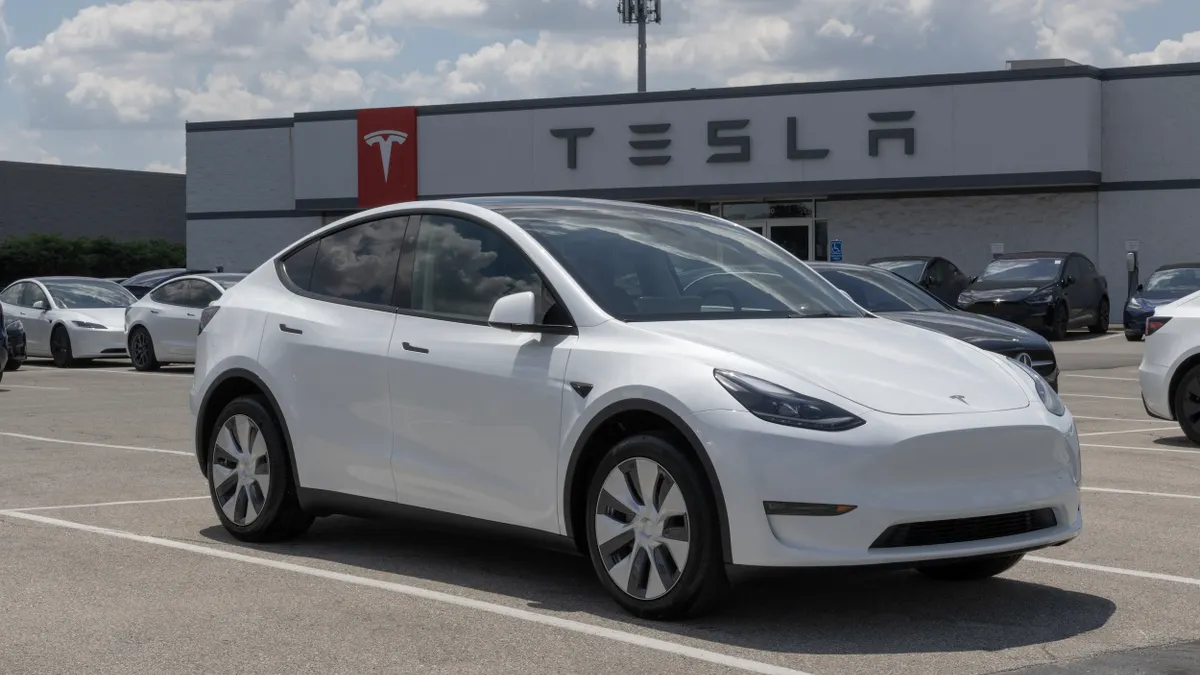Editor's Note: This piece was written by Sam Abuelsamid, a senior research analyst contributing to Navigant Research’s Transportation Efficiencies program with a focus on automated driving, vehicle telematics, connected vehicles, mobility services and advanced propulsion technologies. The opinions represented in this piece are independent of Smart Cities Dive's views.
The end of driving has been one of the most widely discussed and overhyped topics in the automotive world over the past several years. With the realization that making a living by developing smartphone apps is near impossible unless you work for a big software firm, developers and engineers in Silicon Valley have increasingly turned their attention to automating transportation. However, just like startups and indie developers grabbed the early attention in recent technology hype waves, it is the big, established players that are most likely to take the checkered flag in automated driving.
In the 21st century, software and electronics increasingly play a crucial role in day-to-day life. As microprocessors become smaller, cheaper and more powerful, increasingly sophisticated software becomes a driver of capabilities we never could have dreamed of back when I was learning to rebuild a carburetor in the early 1980s.
In just over 40 years, the modern vehicle has evolved from an isolated, completely mechanical system to a network on wheels. With 50-100 computers and even more sensors managing every aspect of use, today’s vehicles are faster, safer and more efficient than ever before. But as the world changes, it is now time to take the final analog piece out of the loop: the human driver.
"But as the world changes, it is now time to take the final analog piece out of the loop: the human driver."

Sam Abuelsamid
Senior Research Analyst, Navigant Research
Despite this technological sophistication, much of the core expertise developed to design, validate, manufacture, and distribute vehicles will still be needed — whether a human or an algorithm is driving. This represents the key differentiator between the automated driving revolution and much of what has come from the technology industry in the past two decades. Compared to a smartphone or virtual reality goggles, the automobile is a vastly more complex machine designed to work in more variable environments while also protecting the occupants from harm over a longer period of time.
Fail fast and iterate
There is a common mantra in Silicon Valley: fail fast and iterate. The idea is to produce a minimum viable product, put it into users’ hands, and then learn from what works — and more importantly, what doesn’t — to make future iterations better. But this concept is not actually new to the technology industry. Every successful business in a competitive market does this to varying degrees. The difference is the threshold for minimum viability.
When creating a mobile app, the bar is very low — although it is higher today than it was at the birth of the iPhone a decade ago. The consequences of failure are relatively trivial, with the worst case being losing money and going out of business. Scale up to building a phone and things get tougher. Customers expect a certain degree of performance and reliability for the hundreds of dollars they spend. For example, many customers expect the manufacturer to leave enough space to account for battery expansion during charging.
Now, scale up to a vehicle that typically weighs at least 3,000 pounds and often much more. Users rely on them to get safely to work, school and home. While human drivers frequently make mistakes when controlling a vehicle, the threshold for viability in the product is both much higher and much more difficult to achieve. The cost of developing and manufacturing a viable product in this space can run into the billions of dollars before the first unit is delivered to a customer. Vehicles are expected to work reliably in all weather conditions and temperatures, from -40°F to more than 120°F, and last for a decade or more.
An enormous range of skill sets is necessary to bring today’s vehicles from conception to production. While a small team working out of a business park in Mountain View or San Carlos, CA can come up with some creative ideas for how to architect and build an automated driving system, it will take a far larger group to bring it to fruition in a way that is robust and safe for real-world use. The reality of the challenge facing companies that seek to commercialize automated systems underpinned Navigant Research’s recent Leaderboard Report on automated driving.
Pick the leader
When Navigant Research revisited its Navigant Research Leaderboard Report: Automated Driving in early 2017, the goal was to gauge which companies were best positioned to succeed in commercializing automated driving. The report focuses on companies developing complete automated driving stacks; companies focused on the traditional model of supplying systems or subsystems to OEM customers were not included in the rankings. Given the complexity of the automotive industry, a good grasp of the core automation technology was necessary but not sufficient. Leading companies would also be those with manufacturing, distribution and support capabilities, or partnerships with OEMs. The ability to develop mobility services (through which these technologies will enter the market) was also a key consideration.
Based on Navigant Research’s analysis that companies capable of bringing all the needed pieces of the puzzle together are more likely to succeed in commercialization, the top of the rankings were led by established OEMs: Ford, GM, the Renault-Nissan Group and Daimler. Each has a strong technical position and is actively developing the business models for deployment. As automated driving technology continues to develop over the next several years, Navigant Research will continue to revisit this Leaderboard Report. Ongoing developments on both the technical and business side will help gauge which companies are poised to succeed in this new market sector.
"Advances in reducing the cost and improving the durability and capability of sensors along with reducing the power consumption of the computing platforms and actuators will all play a part in successful commercialization."

Sam Abuelsamid
Senior Research Analyst, Navigant Research
Advances in reducing the cost and improving the durability and capability of sensors along with reducing the power consumption of the computing platforms and actuators will all play a part in successful commercialization. It should also be noted that the Leaderboard Report represents a snapshot in time. In just the few weeks since the current report was published, there have already been announcements that have potential to move the market. Daimler is partnering with Bosch to use a Nvidia-based computing platform, and the top non-automotive company in this Leaderboard, Waymo, has launched a public pilot test of its automated ride-hailing platform called Early Rider in Phoenix. Waymo has also ordered an additional 500 Pacifica minivans from Fiat Chrysler to expand its test fleet. Along with a firm manufacturing commitment, this could move Waymo to a Leader position, given its strong technology position.
No one company is likely to dominate the automated mobility space as it becomes a viable commercial reality in the early 2020s, nor would it be good for the market if that did happen. A competitive landscape is important to help drive innovation that improves safety, efficiency, affordability and profitability. Navigant Research’s current Leaderboard Report demonstrates that there are many companies that have the potential to succeed in this new ecosystem; even if they are not the leaders today, they will still have a part to play in the coming years.


















